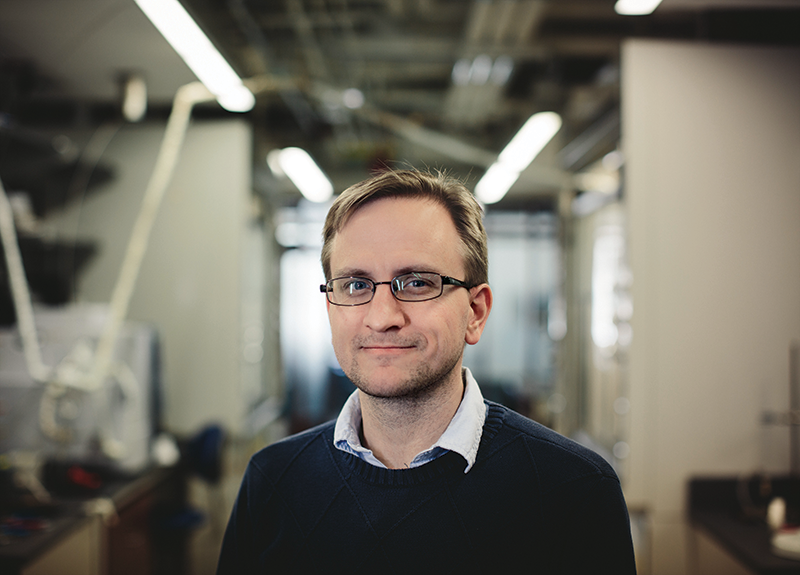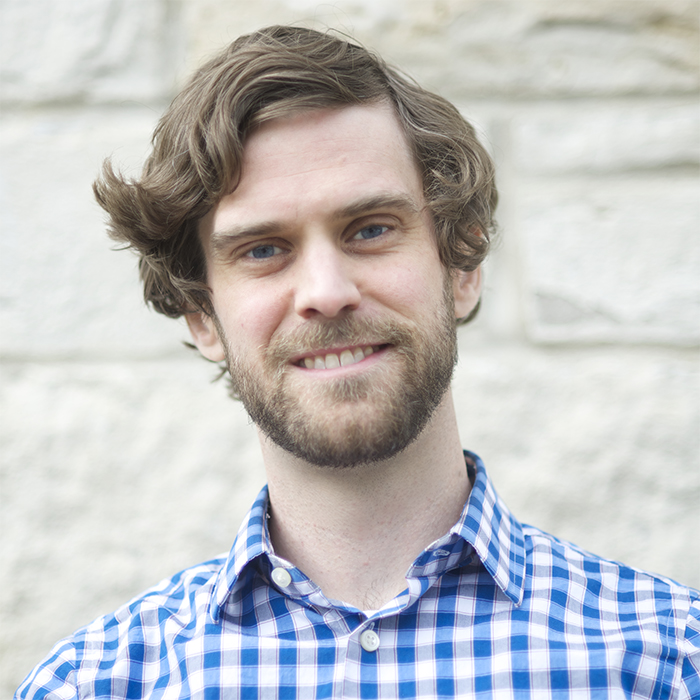An inside look at the who, what, and why of Northwestern’s significant investment in collaborative innovation
In August of 2015, ISEN officially unveiled its Flex Lab. With the support of a $20 million investment from the University, the laboratory invites new levels of collaboration among the Institute’s academic, non-profit, public sector, and industry partners.
ISEN recently sat down with Ryan Young, the Institute’s director of laboratory research and a research associate professor of chemistry, to discuss the Flex Lab, its capabilities, and the promise it holds for shaping the future of sustainability and energy.
ISEN: What is the ISEN Flex Lab?
RYAN YOUNG: The Flex Lab functions as a collaborative facility for global sustainability and energy research and serves as a major hub for accelerating and showcasing work in these highly interdisciplinary fields. It’s home to an array of team-science research projects among groups at Northwestern and other universities, industry, nongovernmental organizations, and national laboratories. The lab creates a bridge between primary research, application, and commercialization.
ISEN: What does the Flex Lab offer?
RY: The lab is large and customizable according to the needs of its occupants. It spans 8,000 square feet across two floors and can comfortably house 40 researchers, with adjoining office and collaboration space. The climate-controlled lab space also offers laser technology, basic lab amenities, and on-site support.
The lab’s flexible design underscores the interdisciplinary nature of ISEN’s mission. Occupants can bring in large and specialized equipment to conduct a wide range of sustainability and energy research. Researchers can generate controlled experiments, characterize new synthesis, and develop prototypes that deploy their findings, without ever stepping outside.
ISEN: Who can use the ISEN Flex Lab?
RY: The lab space is available to Northwestern faculty and student groups, as well as researchers from academic, non-profit, public, and private sector organizations. Research teams should be sponsored by at least one Northwestern faculty member or senior research staff member.
ISEN: Do occupants of the Flex Lab have access to other resources at Northwestern?
RY: Absolutely. The Flex Lab is located in the heart of Northwestern’s Technological Institute, home to the McCormick School of Engineering and Applied Science, the Department of Chemistry, and the Department of Physics and Astronomy. The building also houses a number of the University’s core research facilities, including those focused on solar energy, nanotechnology, catalysis, engineering, biological chemistry, and materials science. We’re very open to facilitating interdisciplinary collaboration among occupants of the lab and the wider Northwestern community.
ISEN: What kinds of research projects typically occupy the ISEN Flex Lab?
RY: Our goal is to provide pathways for at-scale application of discovery and technology. Preference is given to projects that address ISEN’s core research areas—solar electricity and fuels, catalysis and green chemistry, sustainable materials, climate and carbon science, water, and resilient communities. We also look for projects that include collaboration with public and private partners, and we strive to prioritize projects that engage junior-level faculty and researchers from underrepresented groups.
Lab projects are designed to lead directly to practical solutions to real-world sustainability and energy challenges. And that’s what ISEN is all about.




